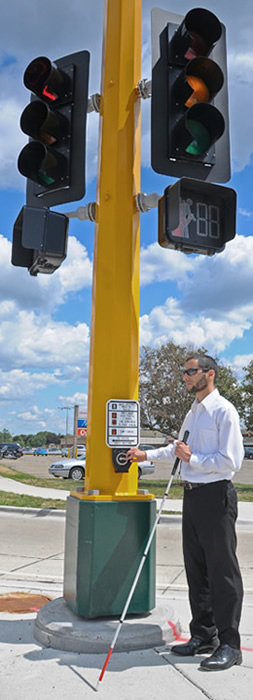What are Accessible Pedestrian Signals?

Accessible pedestrian signals provide directions in alternative formats such as:
- Verbal messages
- Audible tones
- Vibrating surfaces
They also provide pedestrians with information about:
- Existence and location of the pushbutton
- Beginning of the "WALK" interval
- Direction of the crosswalk
Audible signals
Audible signals can be heard six to twelve feet from the pushbutton. Volumes become louder or softer in response to level of traffic noise. Audible signals provide information using:
- Repeating tone indicating location of pushbutton
- Tone, click or spoken "WAIT" indicating button was pushed
- Tone or spoken “WALK” message providing name of street to be crossed
Tactile signals
Tactile signals are located at the pushbutton. Tactile signals provide information using:
- Raised arrow pointing in direction of travel and vibrating during the “WALK” signal
- Braille symbols providing name of street

